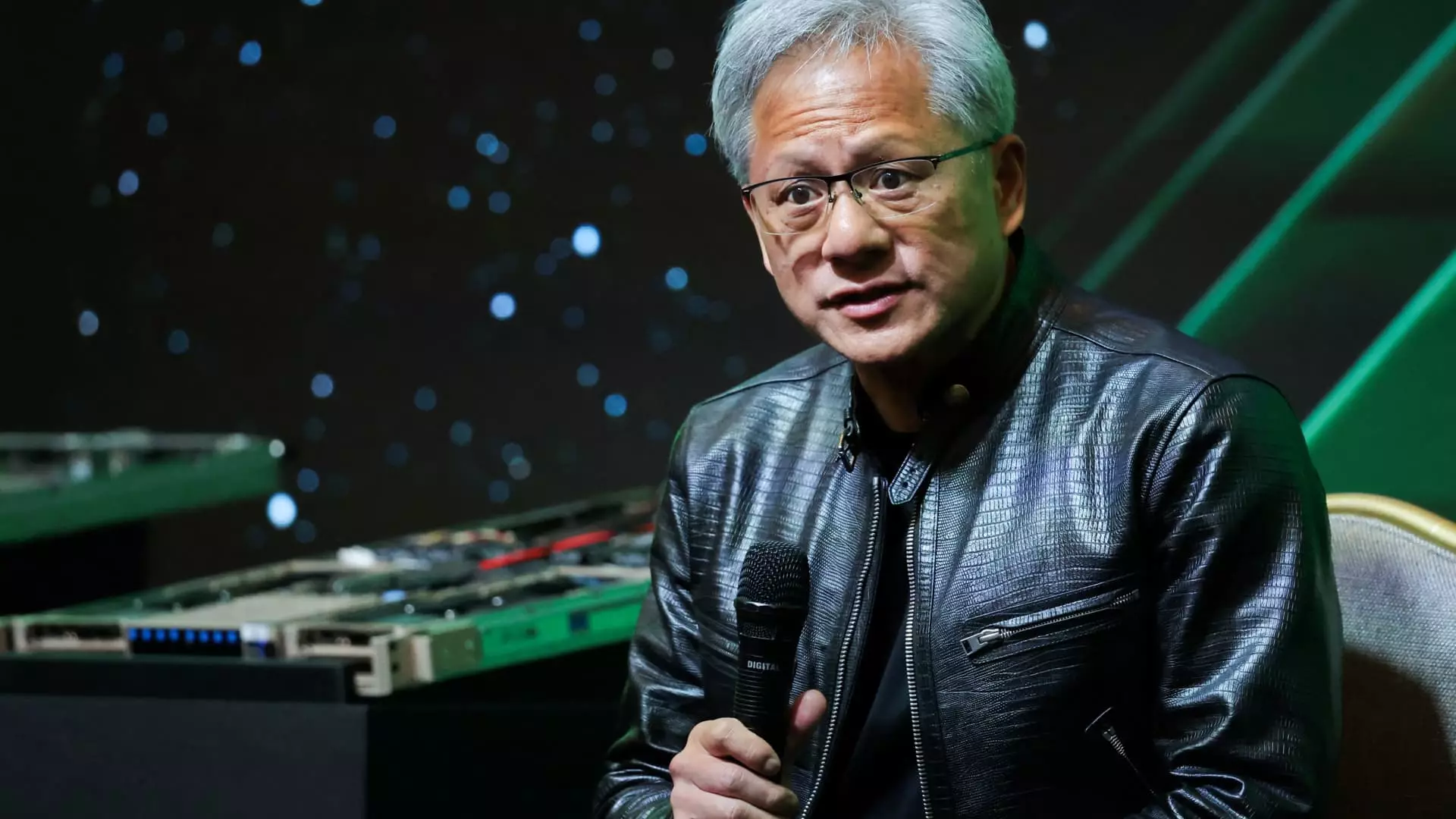Nvidia has emerged as a dominant player in the artificial intelligence (AI) sector, with its market capitalization soaring to remarkable heights over the past two years. The company has capitalized on the rapid acceleration of AI technologies, particularly in the realm of data processing through Graphics Processing Units (GPUs). At the end of 2022, Nvidia’s market cap ballooned nearly ninefold, capturing the attention of investors and analysts alike. However, this exhilarating ascent has been accompanied by a notable degree of volatility. Following a peak in June when Nvidia claimed the title of the most valuable public company globally, it experienced a sharp decline of almost 30% within seven weeks, which translated to a staggering loss of around $800 billion in market value.
As Nvidia gears up to announce its quarterly results, the sentiment among investors remains a mix of anxiety and cautious optimism. With the stock now hovering just 7% below its all-time high, Wall Street’s focus has shifted towards potential fluctuations in demand for AI products, especially from key cloud customers. The trepidation among market players is palpable; any hint of waning AI appetite could lead to significant repercussions not only for Nvidia but for the broader tech sector. As Eric Jackson of EMJ Capital articulated in a recent interview, the stakes are high: a disappointing earnings report could serve as a wake-up call to a market reliant on Nvidia’s success.
Nvidia’s remarkable financial performance in recent quarters cannot be understated. Over the past three quarters, the company’s revenue has seen a threefold increase year-on-year, driven predominantly by its data center segment. However, as analysts anticipate Nvidia’s fourth consecutive quarter of revenue growth exceeding 100%, expectations are tempered, with estimates suggesting a slowdown to approximately 112% growth, translating to $28.7 billion. This raises critical questions regarding sustainability in the face of increasingly challenging year-over-year comparisons.
The forecast for the upcoming quarter projects a growth rate of around 75%, amounting to $31.7 billion. Investor reactions to this guidance will be pivotal. A robust outlook from Nvidia could signal strong ongoing investment from its high-profile clients, while an underwhelming forecast might stoke fears about a cooling infrastructure spending environment. Goldman Sachs analysts, who maintain a bullish stance on Nvidia, noted the rising concerns among investors regarding the longevity of hyperscale capital expenditures, pointing to a potentially frothy environment in a sector characterized by rapid investment.
A critical factor influencing Nvidia’s performance—and investor confidence—lies in the sentiments expressed by its top clients like Google and Meta. Both companies have passionately endorsed their ongoing investment in AI infrastructure, emphasizing that underinvestment poses a greater risk than overspending. Former Google CEO Eric Schmidt reiterated the immense capital needs expressed by these tech giants. Their declarations bolster the narrative that demand for Nvidia’s chips is not merely a temporary spike, but rather a sustained commitment to advance AI capabilities.
Despite these encouraging signals, the discourse surrounding the tangible return on investment for clients remains a vital talking point. Nvidia’s CFO Colette Kress previously indicated that cloud providers yield significant returns—$5 for every $1 spent on Nvidia chips over four years. This insight aims to fortify investor confidence, but continued scrutiny is anticipated in Nvidia’s next earnings call, as stakeholders are eager for further metrics that might confirm or dispel concerns surrounding ROI.
As Nvidia eyes the future, it faces a confluence of challenges. The impending launch of its next-generation AI chips, branded Blackwell, has raised eyebrows due to production delays that may push significant shipments into 2025. Although the company indicated production timelines were on track, setbacks could complicate Nvidia’s growth narrative. The competitive landscape is also intensifying, with firms such as Advanced Micro Devices (AMD) and Google emerging as formidable rivals. The need for Nvidia to maintain its performance lead is crucial, particularly as it moves towards the rollout of newer chip generations.
In light of the current advancements with its Hopper series, many key clients are eager for the enhanced processing capabilities of the upcoming Blackwell chips. While delays could hinder immediate revenue, Nvidia may offset this through bolstered sales of Hopper models, particularly the newer H200. Analysts suggest that resources may be redirected towards ramping up these existing models in the interim, underlining a strategic pivot in adopting supply and demand trends.
While Nvidia has established itself as a heavyweight in the AI-driven market narrative, its future trajectory hinges on maintaining demand, ensuring robust client investment, and navigating the challenges presented by production timelines and throttling competition. Investors remain watchful, as Nvidia’s performance may very well hold the key to broader market sentiment and investment strategies going forward.

